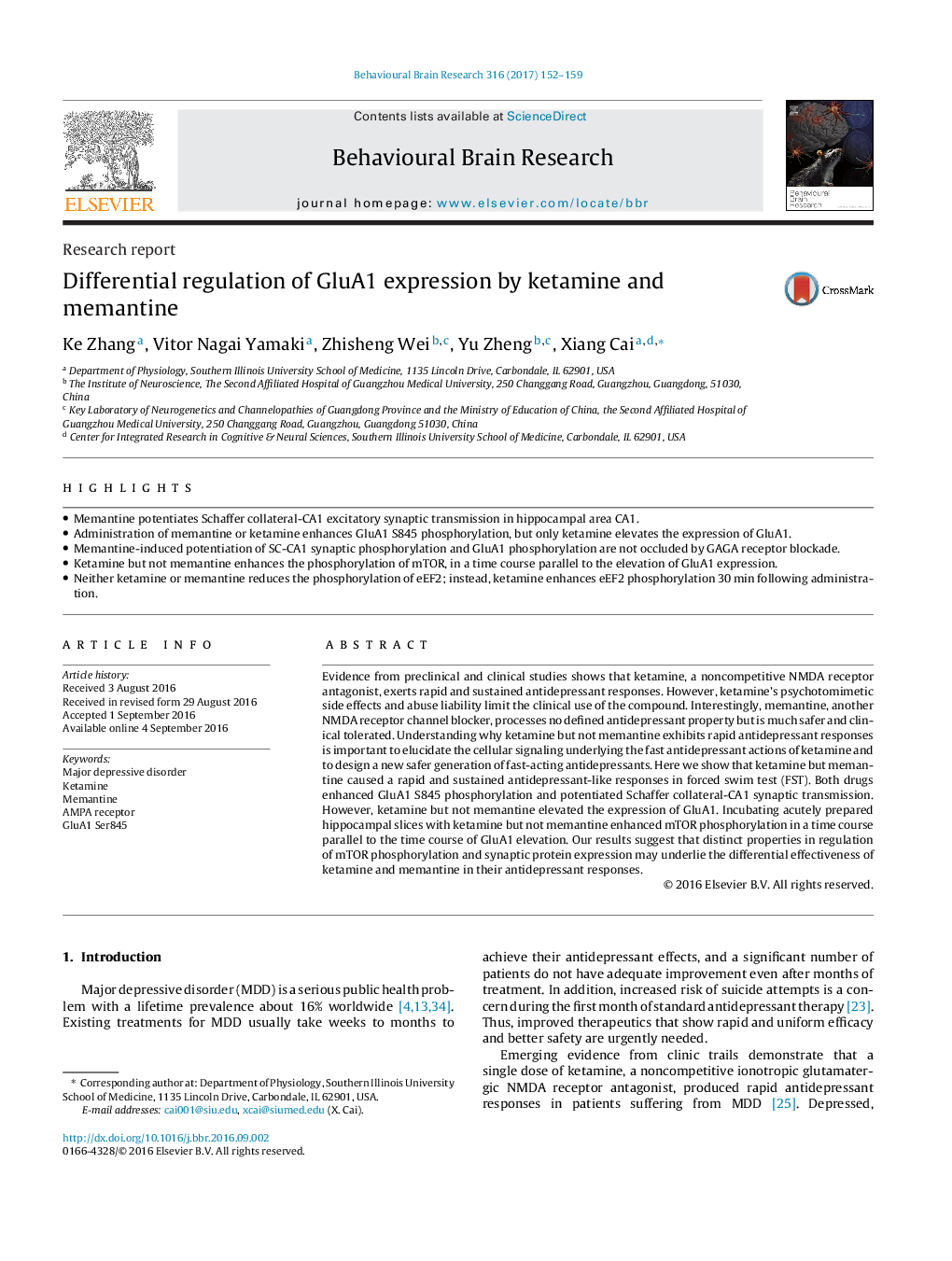| Article ID | Journal | Published Year | Pages | File Type |
|---|---|---|---|---|
| 4312009 | Behavioural Brain Research | 2017 | 8 Pages |
•Memantine potentiates Schaffer collateral-CA1 excitatory synaptic transmission in hippocampal area CA1.•Administration of memantine or ketamine enhances GluA1 S845 phosphorylation, but only ketamine elevates the expression of GluA1.•Memantine-induced potentiation of SC-CA1 synaptic phosphorylation and GluA1 phosphorylation are not occluded by GAGA receptor blockade.•Ketamine but not memantine enhances the phosphorylation of mTOR, in a time course parallel to the elevation of GluA1 expression.•Neither ketamine or memantine reduces the phosphorylation of eEF2; instead, ketamine enhances eEF2 phosphorylation 30 min following administration.
Evidence from preclinical and clinical studies shows that ketamine, a noncompetitive NMDA receptor antagonist, exerts rapid and sustained antidepressant responses. However, ketamine’s psychotomimetic side effects and abuse liability limit the clinical use of the compound. Interestingly, memantine, another NMDA receptor channel blocker, processes no defined antidepressant property but is much safer and clinical tolerated. Understanding why ketamine but not memantine exhibits rapid antidepressant responses is important to elucidate the cellular signaling underlying the fast antidepressant actions of ketamine and to design a new safer generation of fast-acting antidepressants. Here we show that ketamine but memantine caused a rapid and sustained antidepressant-like responses in forced swim test (FST). Both drugs enhanced GluA1 S845 phosphorylation and potentiated Schaffer collateral-CA1 synaptic transmission. However, ketamine but not memantine elevated the expression of GluA1. Incubating acutely prepared hippocampal slices with ketamine but not memantine enhanced mTOR phosphorylation in a time course parallel to the time course of GluA1 elevation. Our results suggest that distinct properties in regulation of mTOR phosphorylation and synaptic protein expression may underlie the differential effectiveness of ketamine and memantine in their antidepressant responses.
